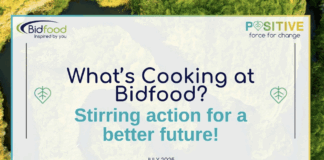Changes to food labelling laws might not have been high on most people’s list of predictions for Theresa May’s Brexit plans, but at the recent Conservative Party conference, the Prime Minister said:
“The country has voted to leave the EU… and that means we are going, once more, to have the freedom to make our own decisions on a whole lot of different matters, from how we label our food, to the way in which we choose to control immigration.”
The way nutritional information is displayed on a packet of crisps or a box of cereal might not sit alongside freedom of movement or access to the single market in the PM’s negotiating priorities, but it’s an issue that has long created tensions – which have just bubbled up again.
In September, 100 or so MEPs requested that the European Commission investigate the commercial impact of the UK’s ‘traffic light’ labelling scheme, which features on a significant number of products in wholesalers’ depots. They cited a study showing that sales of Parma ham, Parmigiano Reggiano and Brie – all of which have ‘amber’ or ‘red’ warnings – have fallen between 8% and 14% since the introduction of the labels. By contrast, the study found that products without the labels have seen their sales increase.
This confirms “the influence that the system is able to have on consumers, leading them not to buy products, without providing correct and transparent information on the label,” they said.
Food and Drink Europe, which represents European food manufacturers, is none too happy either: “We’re convinced [traffic light labels] stigmatise certain types of food by making some perfectly standard foods look ‘dangerous’ for one’s health,” a spokesperson said.
“Absolute rubbish,” replied the UK’s Department of Health. There’s “no credible evidence” that the scheme acts as a barrier to trade, its spokesperson said. Food regulation experts also note that the scheme is in line with the EU’s Food Information to Consumers Regulation, which is set to come into force later this year. The challenge by MEPs is “difficult to understand”, adds Dominic Watkins, head of law firm DWF’s food sector group.
Back in October 2013, four months into the traffic light scheme, 60% of consumers were already using the labels. But do they encourage people to eat more healthily?
A study by the Food Standards Agency in Northern Ireland, published in August, found that people often ignored labels when they buy the ‘usual’ groceries. However, more pictures and fewer numbers could increase usage, it concluded.
Research just published by experts in Germany and the US backed this up, as it showed that colour-coded labels ‘significantly increased’ healthy choices among a group of consumers.
Italy doesn’t like the idea, but other countries appear keen to follow the UK’s lead: France has just launched a major trial involving 2m products and four different nutrition labels, three of which use the traffic light colours in the same way as the UK does.
The system France ends up with will be voluntary, of course – EU regulations prohibit mandatory food labelling in individual member states. And this is where concerns about confusion might well have some traction.
About a third of products don’t have the traffic lights on them. Nestlé, for example, has adopted grey labels with numerical nutritional contents. This complies with EU law, but arguably does little to help shoppers. Weetabix has recently added the labels to some products; however, they’re all green.
Izzi Seccombe, who chairs the Local Government Association’s community wellbeing board, has called for traffic light labels to become mandatory. “Consumers need a single, standard and consistent system, which should be universally adopted,” she says.
This isn’t possible now, but it could be post-Brexit. Having said that, the government may have other, even more controversial ideas in mind: “We want to build on the success of our current labelling scheme and review additional opportunities to go further,” it noted in its Childhood Obesity Plan. “This might include clearer visual labelling, such as teaspoons of sugar.”
That could be the start of another bitter battle.







